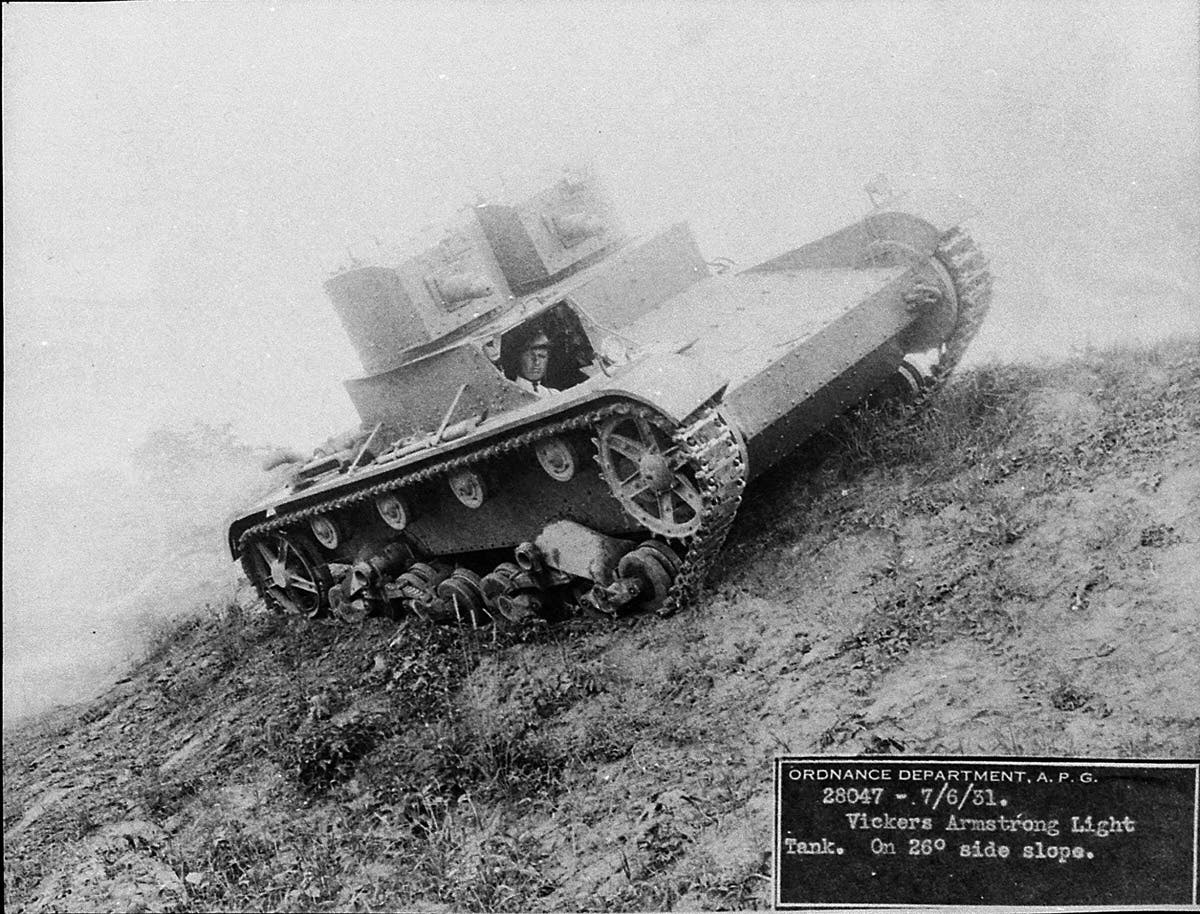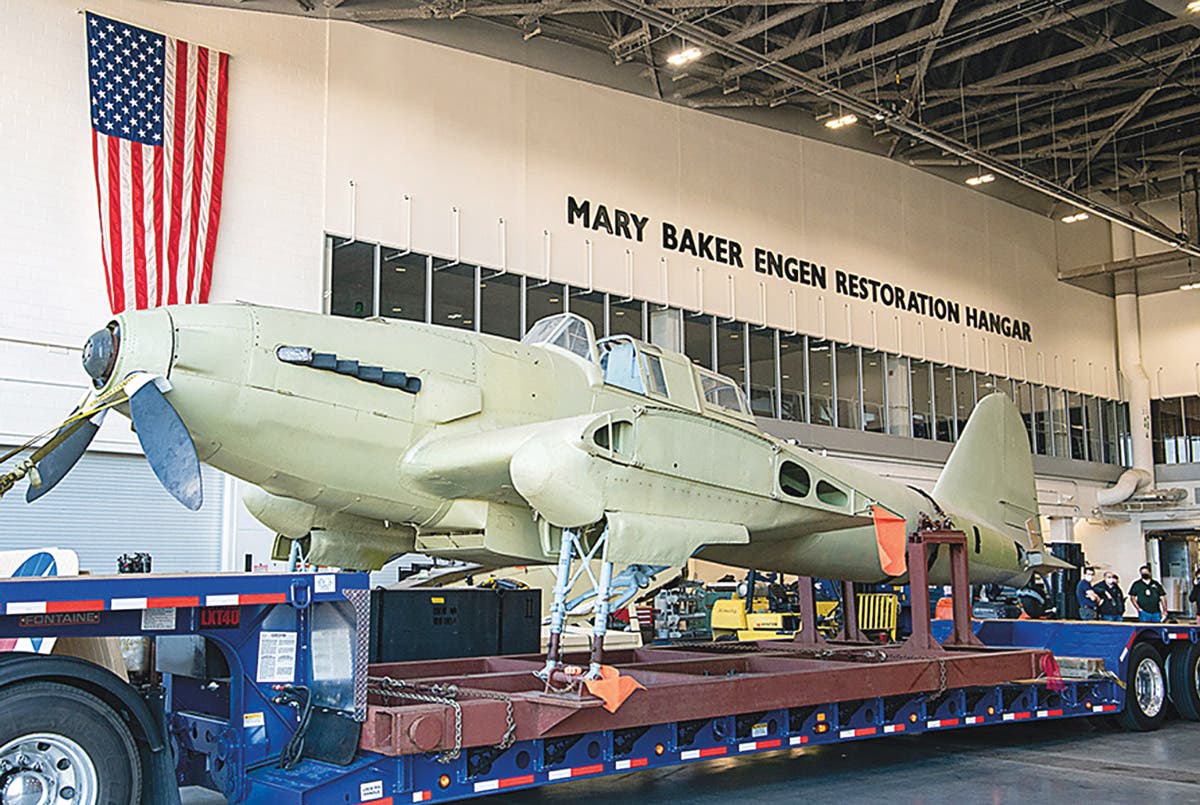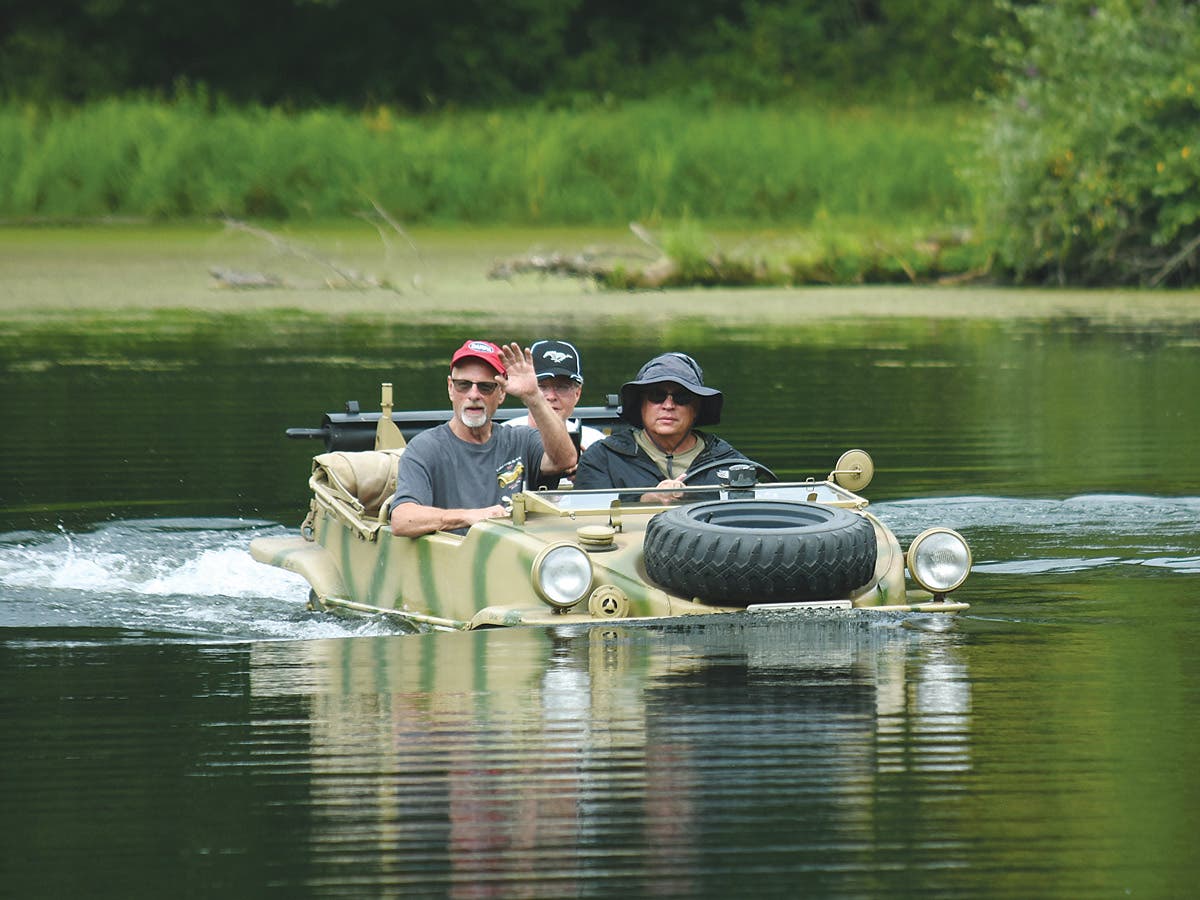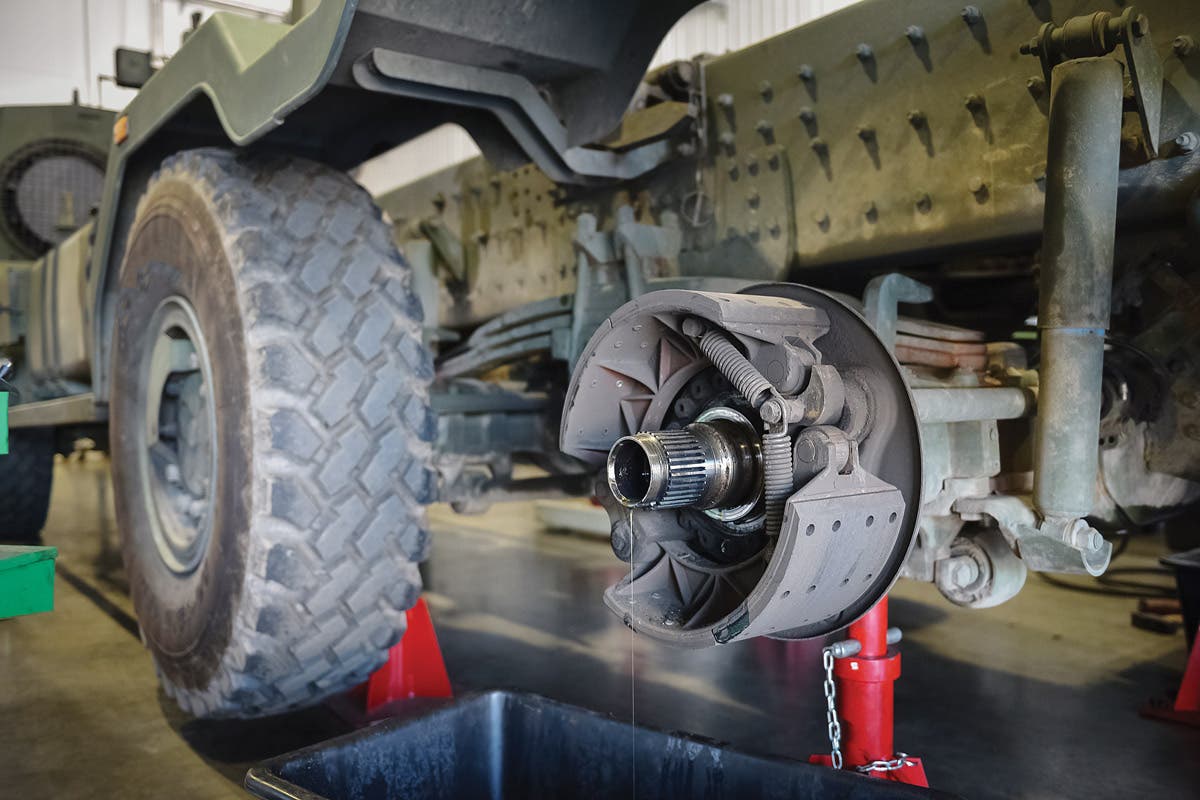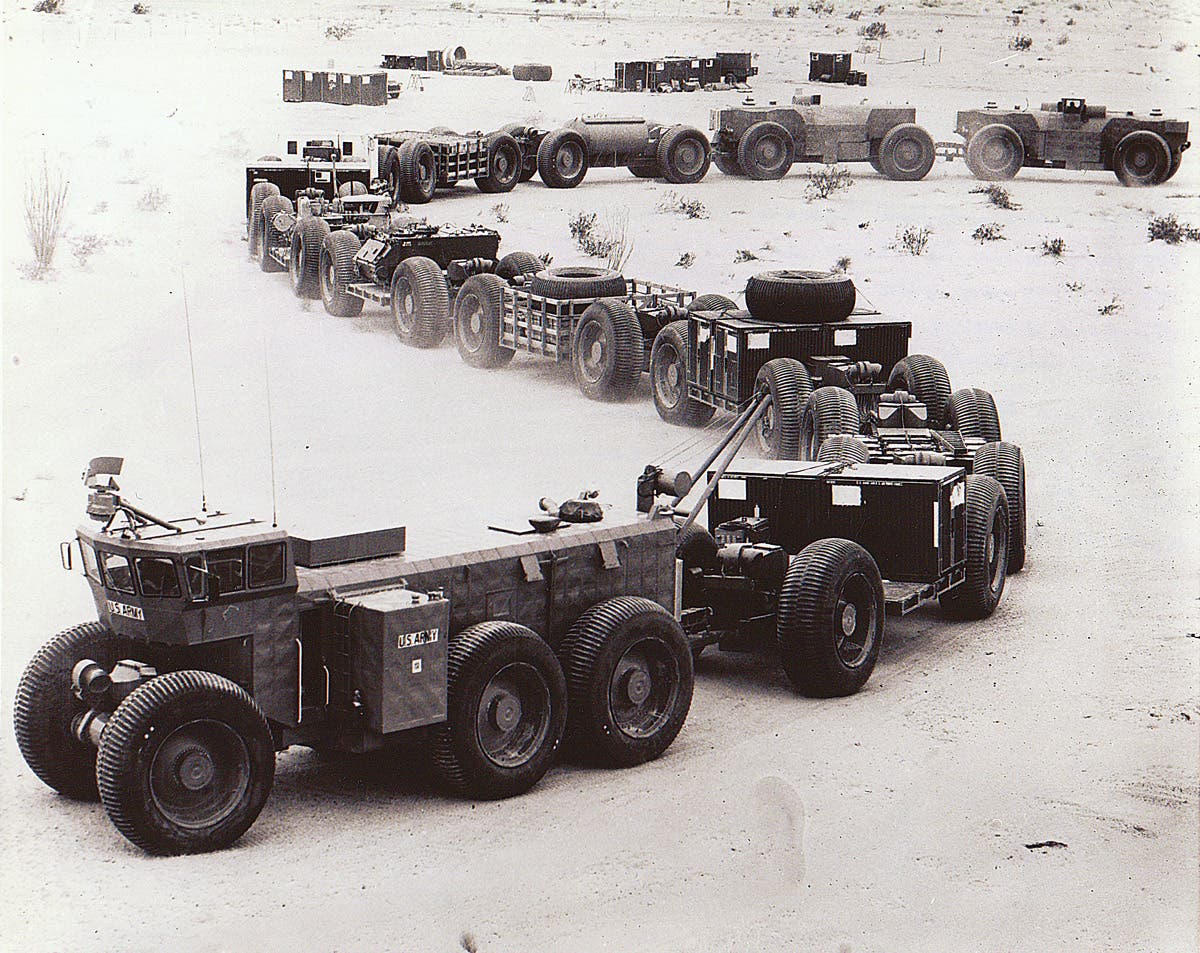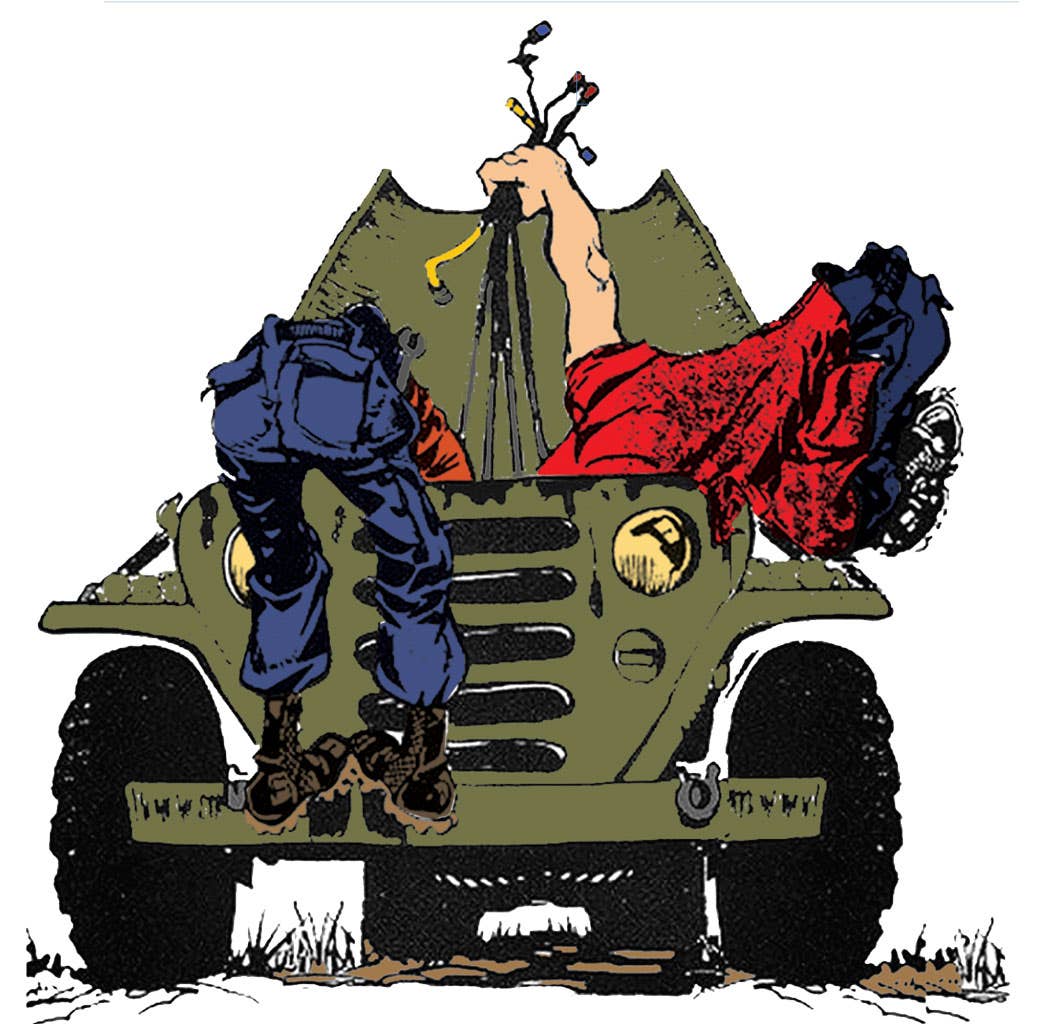HMMWVS in the Historic Military Vehicle Hobby – Part II
Before you buy a Surplus HUMVEE, consider these essential tips
Part One of this article (HMMWVS in the Hobby) offered a basic history and development primer of the High Mobility Multipurpose Wheeled Vehicle commonly known as the HMMWV, or “Humvee.” Part Two in this issue offers some tips for those interested in buying a HMMWV.
To recap, for many readers of Military Vehicle Magazine, owning an historic military vehicle (HMV) is a hobby. A person’s choice of hobbies doesn’t have to be based upon practicality, though you probably should use logic when choosing a vehicle. This is especially important in regard to how much a vehicle is going to cost in time and money versus the enjoyment it brings.
As applied to HMV ownership, there is no logic in buying a vehicle you can’t enjoy like a vehicle that is too large or too small for its intended use, or a high-maintenance vehicle that requires more attention and money than its owner is willing or able to give it. With large numbers of HMMWVs currently being released from U.S. military service, you may be considering a purchase, so the purpose of this article is to drop a little knowledge to help you decide if you really want a HMMWV—and are, indeed, willing and able to give it the time and attention it will require.
IS A HUMVEE THE RIGHT VEHICLE FOR YOU?
To begin, you might ask yourself why do want a HMMWV? Do you want it to restore for shows? Are you a “user” who wants one for its off-road capabilities? Or, do you want one because it will be the biggest and baddest SUV on your block? Regardless of your reasons for wanting a HMMWV, here are four basic questions you should ask yourself:
1. Assuming you are able to afford the relatively high purchase price, are you also able to afford the restoration, operating and maintenance costs? If you want to buy a less expensive “fixer-upper,” are you able to afford the parts it will take to put the vehicle back together? As with most other HMVs, you will usually end up spending at least as much as the purchase price on the parts, accessories and cosmetics needed to resurrect a basket-case.
2. Are you willing to spend the time it takes to rebuild or restore a HMMWV, or to simply maintain one? This isnot always simple. A HMMWV is a high-maintenance vehicle compared to most civilian SUVs. Its service, diagnostic, and repair requirements differ a lot from those of other common HMVs such as Jeeps, M37s, or M35s.
3. Are you physically able to work on a HMMWV? For example, a two-piece tire and wheel assembly with a rubber runflat for a HMMWV weighs about 155 pounds, and most automotive tire shops can’t or won’t service them. New OEM tires can run as high as $600 each, though with prudent shopping, you can find them for less. Like most aggressive-tread tires, they have a fairly short road life of around 25 to 30 thousand miles. This is not as short a lifespan as the non-directionals used on many other historic military vehicles, but non-directionals are usually cheaper.
4. The fourth question you should ask yourself is, are you prepared with the skills, tools and workspace to service and repair a HMMWV, as well as to diagnose its high-tech problems? Just because HMMWVs are relatively new vehicles, don’t think you won’t be facing all the same problems, expenses and challenges that come with owning, operating, and maintaining any other military vehicle, from a WWII Jeep to a Vietnam-era M715. Also keep in mind that any vehicle used off-road requires more service and attention than one that is only driven on pavement.
SOME SAGE ADVICE
It might be helpful to consider the experience of an old friend of mine who lives in the desert near Tucson, Arizona. He bought a military surplus HMMWV back when they were still rare on the civilian market. He lives about five miles up a rocky trail on which more than a few SUVs have been wrecked. He also maintains several mining claims in remote desert areas, hence his desire for a HMMWV.
He wrote to ask if I’d like to come down and check it out, which of course would give me some first-hand experience to write about HMMWVs. However, he was a bit red-faced when I arrived, and the only historic military vehicles in sight were his rusty M38A1 and an equally trail-scarred M37. It seems he had gotten so used to driving the older vehicles, that he had high-centered his new HMMWV climbing out of a wash! This was the same wash that the Jeep and M37 had been effortlessly crossing for years. So, it seemed a little ironic that my first encounter with a high-tech HMMWV was performing a rescue with a low-tech Dodge!
My friend had owned his HMMWV for about a month, and though he was pleased with its performance in general, he had not been thrilled to discover that it couldn’t entirely replace his Jeep or the M37. In other words, the HMMWV couldn’t meet all his requirements.
Besides the high-centering incident, the HMMWV could not negotiate narrow spots on several mountain trails. Additionally, being an early production vehicle, his HMMWV had suffered glow-plug controller problems, a trait common to early units.
Early production HMMWVs were fitted with a 6.2-liter GM V-8 diesel engine, the same as used in many GMC Suburbans and pickups, with a rated net horsepower of 150 and a gross horsepower rating of 165 at 3600 rpm, coupled to a three-speed GM automatic transmission. Current models use a GM 6.5-liter engine, which produces 160 net horsepower at 3400 rpm, and a four-speed GM automatic transmission.
So, when shopping for a HMMWV, one should use the same criteria in judging the condition of the engine and transmission as if buying a Suburban or a pickup. In fact, with a few exceptions unique to HMMWVs, you should use the same criteria as when shopping for most other vehicles, whether a historic military or civilian vehicle.
SOME COMMON SENSE REMINDERS
Foremost: Never buy any vehicle that doesn’t have a clear title or all the necessary paperwork to register and license it in your state or country. Of course, check that the vehicle’s I.D. number on its data plate matches the number on the title or paperwork. If you have any doubts about the title or paperwork, make an arrangement with the seller to go with you to the DMV and get the title transferred or else the deal is off. HMMWVs are currently being released from government service for “off road use only,” but you still need legal proof of ownership.
Unless you’re buying a restored HMMWV, general appearance—basically meaning a nice paint job—is not important. However, if the vehicle is very dented, scarred, muddy, or dirty, this usually means it was used hard...and many HMMWVs being sold these days were indeed used hard in harsh environments!
Don’t pay much attention to the miles shown on the odometer because it’s very common for MV speedometers to be replaced. A more accurate judgment of mileage and use can usually be made by checking the wear on the brake and accelerator pedals.
In general, the engine should be fairly clean and look like it’s been cared for, though this may be relative for a HMMWV that served in Iraq or Afghanistan! Before starting, check the oil for correct level on the dipstick, and look for a milky or greenish color, which may indicate a water leak from a head gasket or a cracked block. The oil in diesel engines generally looks dirty compared to the oil of well-maintained gasoline engines (but of course, an informed HMMWV buyer already knows this).
The engine should start easily both cold and warm—HMMWVs are noted of glow plug problems—run and idle smoothly, and there shouldn’t be any deep knocking sounds to warn of loose rod or main bearings. Also listen for loose piston pins, which will generally be most apparent on highway acceleration at about 30-35 mph.
Check for oil or bubbles in the radiator while the engine is running, which may indicate a water leak into a cylinder. Normal hot engine oil pressure for HMMWVs built prior to 1966 is 10 psi at idle and 40 to 45 psi at 2000 rpm. For turbo HMMWVs, the manual says 6 psi at hot idle and 30 psi at 2000 rpm. Pressures lower than these may indicate worn rod and main bearings, though it could also be caused by a restricted oil cooler line or fitting, or possibly a problem with the oil pressure regulator.
No visible exhaust smoke is ideal, though this is a diesel,so there will probably be some. “White smoke” is usually steam and normal when an engine is cold. However, if it continues after an engine has warmed up it often indicates a leaking head gasket or serious problems like a cracked head or block. Blue smoke indicates oil burning and there is something seriously wrong. Black smoke indicates too much fuel. Black smoke is fairly normal upon hard acceleration but should not persist.
With the engine running, listen for whining or squealing sounds that may indicate worn out water pump, alternator, and/or power steering pump bearings. Also check the condition of the serpentine belt.
Check the radiator and cooling stack for condition and leaks. The engine coolant should look clean, and ideally contain antifreeze. If it appears that the radiator has been spewing water from the overflow pipe or surge tank, indicating chronic overheating, the thermostat may be stuck closed and/or the engine block may be badly corroded inside. Check the radiator hoses for old age and cracks. Hoses should be flexible; extreme hardness indicates old age. A very soft or flabby feel indicates internal rot. Also check for bent fins on the radiator and oil cooler.
Check the oil levels in the transmission/transfer case. differentials and geared hubs. Automatic transmission fluid should look clean and never have a burned smell. Look for water (greenish color) and metal particles in the gear oil. Keep in mind that many HMMWVs forded streams and/or made beach landings.
Gear oil should be fairly clean and amber colored: black and tarry indicates very old, worn out oil. Look underneath the vehicle when it’s warmed up and running for oil leaks from the engine, transmission/transfer case, and differentials. If the vehicle “clunks” orshudders when starting from a stop, it may have loose or broken engine and transmission mounts.
THE DRIVELINE
HMMWVs are unique among many historic military vehicles in that they have geared hubs in their final drives. These hubs are prone to many malfunctions, the worst of which is loosing wheels. The spindle nut retaining washers on many older model HMMWVs were defective and let the nuts come loose.
Keeping in mind that HMMVWs have power-assisted disc brakes, check that the brake pedal doesn’t go more than halfway to the floorboard before the brakes take hold the first time you step on it. If the vehicle pulls to one side every time you step on the brakes, there may be oil or grease on the rotors and pads. Metallic scraping sounds often indicate badly worn pads, which may have scored the rotors. If the brake pedal pulsates when stepped on while driving, it usually indicates warped rotors. The brake fluid should be clean, the reservoir full or nearly so, and the fluid should not smell burned.
The parking brake should hold the vehicle on any reasonable incline. Early model HMMWVs had problems with the parking bake cable being chafed or crushed by the lower control arm. Even though a new bracket was developed, you should check the brake cables for damage or wear. The official military quick-fix was to wrap the cables with rubber tape until the new style brackets were installed.
HMMWVs are noted for brake problems which are often minor but annoying, such as shuddering, vibrating, squealing, or odd sounds. Check the bolts that hold the brake caliper brackets in place. Make sure they’re all tight. HMMWVs are known for loose bolts in general, so it’s a good idea to check all over. Also look for worn out bushings on the suspension arms; check the bolts on the half-shafts. These are also prone to loosening and will cause major vibration and shuddering brakes, as well as destroying the oil seals.
Keeping in mind that HMMWVs have power-assist steering, check for excessive play in the steering system. Try to determine where the looseness is if you encounter any.
Check all the tires for obvious wear, damage and excessive aging. Examine the front tires for cupping or irregular wear, which usually indicates misalignment. Be wary if the rear tires are cupped but not the front: This usually means they’ve been switched around.
HMMWVs may be fitted with a Central Tire Inflation System (CTIS) which allows the driver to inflate or deflate the tires from inside the cab for better flotation or traction depending upon the terrain. This system is prone to damage and leaks and should be carefully inspected. Many early model HMMWVs had problems with the front air line hoses being too short, and it was common for them to stretch, leak, or break if the wheels were turned sharply.
OTHER PLACES TO LOOK FOR TROUBLE SPOTS
Examine all the wiring for frayed spots or rotten insulation. Check that all the lights are working, as well as the instruments, especially the oil pressure and temperature gauges. Early vehicles had a poorly-designed electrical grounding system. The body ground was located behind the heater controls in the dash panel, and the main engine ground was on the left rear of the cylinder head. Virtually all the body grounds come together at one point, so it’s very important that all the connections are clean and tight.
See that the voltmeter shows the batteries are charging at any engine speed above idle. Check the windshield wipers and horn for proper operation. The early style wiper arm pivots had a round shaft, and the wiper arm splined base was pressed onto this shaft. Over time, and especially if wiping mud or snow, the arm mount would come loose from the shaft. At first this usually resulted in the arm still moving sometimes, but eventually it would stop moving entirely. The new style pivot has a square shaft, which eliminates this problem. It’s a fairly simple job to replace the old style pivot with a new one.
As with most newer vehicles, a HMMWV has relatively few lubrication points compared to vehicles such as the M37 or M35: instead it uses replaceable bushings and fittings in its suspension and steering system. The key word is “replaceable.” This is not a vehicle that one simply greases at regular intervals and its chassis lasts indefinitely. Components such as control arm ball joints, suspension bushings and steering linkage wear out fast in a unit that is driven daily, and much more so if the vehicle is used off-road. As with any vehicle, worn out suspension bushings will affect wheel alignment, causing irregular wear on the tires. Inspect the suspension system carefully on all four wheels.
Since many HMMWVs were ridden hard and put away wet, it’s important to thoroughly examine the undercarriage for rust, corrosion and damage. In addition, some early production HMMWVs with front and rear cross members manufactured by Oxnard Precision Fabrication, Inc. (Cage Code ODEEL) had or may experience failures. Both the material of the cross members and the process in which they were fabricated were faulty. Testing showed that the cross members failed in the area where the lower control arms bolt to the cross member. As a result of this failure, the operator could lose control of the vehicle causing possible injury/fatality to the operator.
A HMMWV’s body tub, rear fenders and tailgate are made from heat-treated aluminum, with the panels bonded and then riveted together. While this eliminates rust (though not always corrosion), aluminum stretches when dented. Dents and creases cannot simply be popped or pounded out as with steel body parts. Welding or patching aluminum also requires a bit more skill and practice than working with steel. This is something to think about if you’re considering the purchase of a bashed-up HMMWV.
The hood (or bonnet) is made from a composite of fiberglass and plastic, which also require certain skills to repair. Speaking of bodywork, Chemical Agent Resistant Coating (CARC) paint has been used on some U.S. military vehicles since the early 1970s. Exposure to vapors, mist, dust or fumes from CARC may cause various health problems, such as irritation to the respiratory tract, edema, dermatitis, dizziness, skin rash, itching, swelling of extremities, and/or eye irritation. In extreme cases such exposure can damage the nervous system, kidneys or liver. CARC paint may also be fatal if swallowed. The correct type of respirator, clothing, eye protection, and gloves should be used if sanding vehicles that were painted with CARC. The same warnings apply when torch-cutting or welding body parts of CARC painted vehicles.
One method of determining if a vehicle has CARC paint is to soak a clean cotton cloth with acetone, rub a painted area for about ten seconds, let set for about a minute, then repeat the process once again. If the paint comes off, it is probably not CARC.
TAKE IT FOR A TEST DRIVE
When going for a test drive, let the seller drive first. Pay attention to how he treats the vehicle. While you would logically assume a seller would baby a vehicle in such situations, this is not always the case. Some people actually don’t know how much they’re routinely abusing a vehicle.
Listen for loud howls or whines from the drive train. Lots of rumbling vibration that gets louder the faster you go may indicate loose universal joints or yokes, or bent or unsynchronized drive shafts. There should be no front end shimmy or a lot of drive train vibration.
If possible, always come back the next day for another look at thevehicle. You will almost always find things you missed on the first inspection.
It’s important to remember that HMMWV were produced in the thousands from the 1980s to the present day. In other words, don’t feel desperate to buy the first HMMWV you see. Take your time, learn as much as you can about the vehicle, and you will make an informed purchase.



